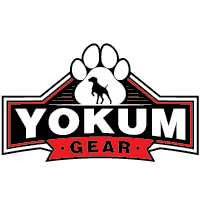Bringing a new puppy into your home is an exciting and joyful experience. Amidst the excitement, it's essential to prepare for their arrival by ensuring you have all the necessary supplies. One of the most critical items on your list should be the perfect leash. A suitable leash not only provides control and safety but also contributes to effective training and bonding with your puppy. Below, we delve into various factors you need to consider to choose the perfect leash for your furry friend.
Material
The material of the leash plays a significant role in its durability, comfort, and safety. Common materials include nylon, leather, and chain:
- Nylon Leashes: These are lightweight, come in various colors, and are generally more affordable. They are also easy to clean and durable. However, they may wear out faster if your puppy tends to chew on their leash.
- Leather Leashes: Leather leashes are robust, durable, and become more comfortable with usage. They tend to be more expensive but can last a lifetime. Make sure to choose a well-crafted leather leash to avoid any breakage.
- Chain Leashes: These are best for puppies who are heavy chewers as they are nearly impossible to destroy. However, they can be heavy and might not be as comfortable for smaller breeds.
Length
Leash length directly affects your control over your puppy and their freedom to explore. Here are some common lengths and their best uses:
- Short Leashes (2-4 feet): These offer good control and are excellent for training sessions and walking in crowded or high-traffic areas. They keep your puppy close and safe.
- Standard Leashes (6 feet): This is the most commonly used length, providing a balance between control and freedom. Ideal for everyday walks and training.
- Long Leashes (8-10 feet): These are great for obedience training and giving your puppy more freedom to roam while still under control.
- Retractable Leashes: These can extend up to 26 feet, allowing your puppy ample space to explore. However, they can be less reliable in maintaining control and may lead to accidents if not used properly.
Clip Type
The clip connects the leash to your puppy's collar or harness. It's essential to choose a sturdy, reliable clip to ensure the leash does not detach unexpectedly:
- Bolt Snap Clips: These are common and easy to use, although they may wear out over time.
- Trigger Snap Clips: These are more secure compared to bolt snaps and are less likely to unclip accidentally.
Leash Width
The width of the leash often correlates with the size and strength of your puppy. Larger, stronger puppies will require wider leashes for better durability, while smaller breeds may prefer thinner, lighter leashes for comfort. Typically, widths range from 0.5 to 1.5 inches.
Comfort and Safety
Comfort and safety should be top priorities when choosing a leash. Ensure the handle of the leash is padded and comfortable to hold, preventing hand fatigue and providing a secure grip. Reflective materials or stitching can enhance visibility during nighttime walks, adding an extra layer of safety for both you and your puppy.
Training Leashes
If you are in the process of training your puppy, specialized training leashes may be beneficial. Look for leashes that support specific training techniques, such as:
- Martingale Leashes: These combine a collar and leash into one piece, tightening slightly when the puppy pulls, discouraging the behavior without causing discomfort.
- Slip Leashes: These are effective for training to heel and general obedience. They tighten when the puppy pulls and loosen when they follow commands.
In conclusion, choosing the perfect leash for your puppy involves careful consideration of the material, length, clip type, width, and overall comfort and safety. By selecting a leash that suits your puppy's needs and your training goals, you ensure a safe, enjoyable, and successful walking experience. A well-chosen leash supports effective training and strengthens the bond between you and your new furry companion, setting the foundation for a harmonious life together.

